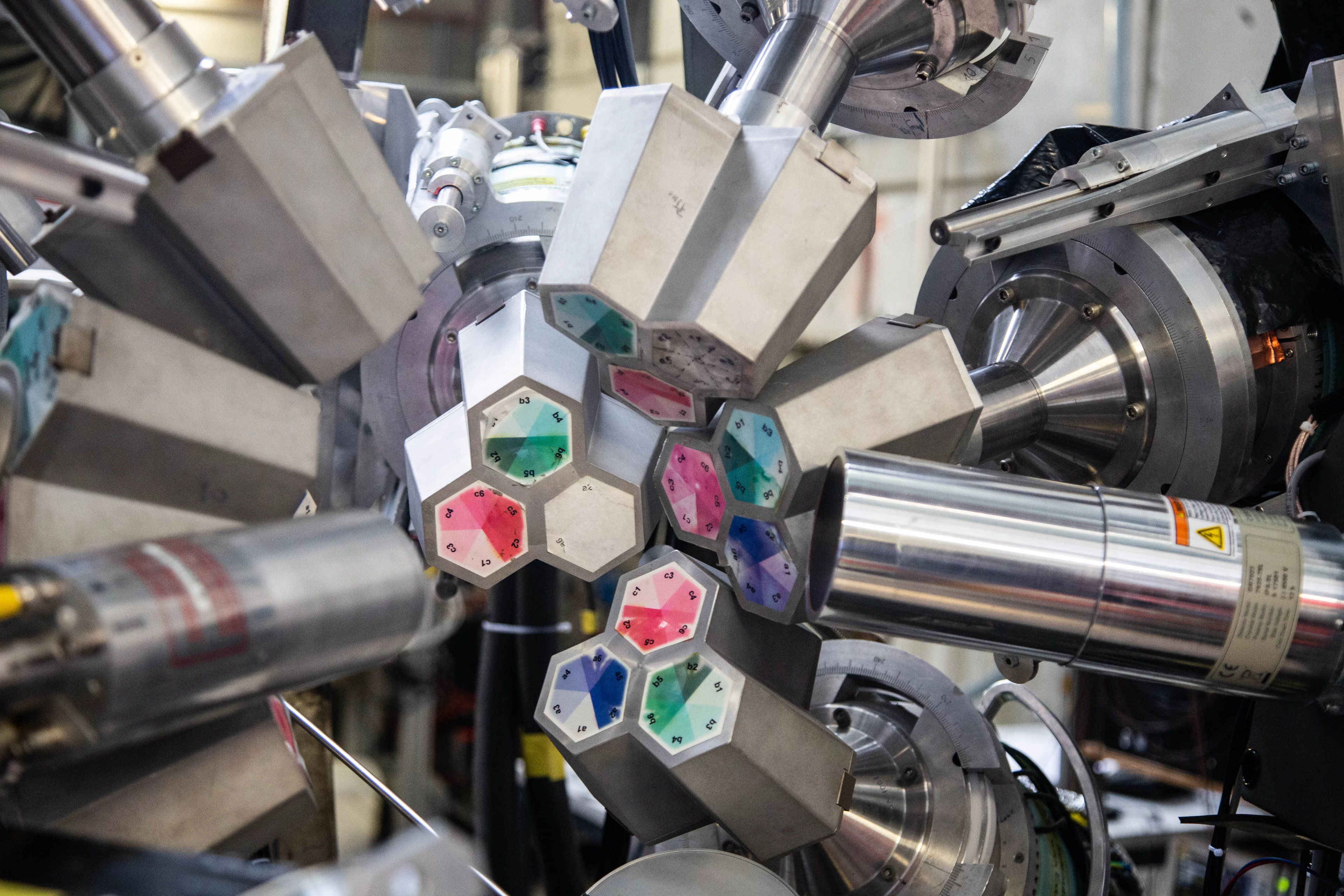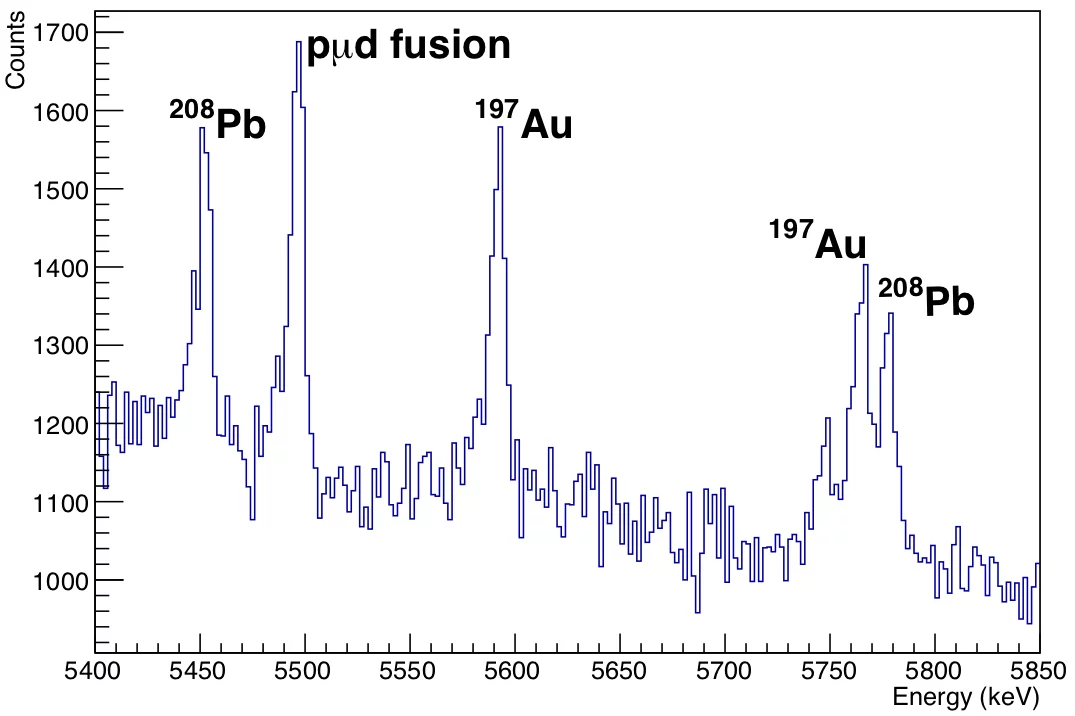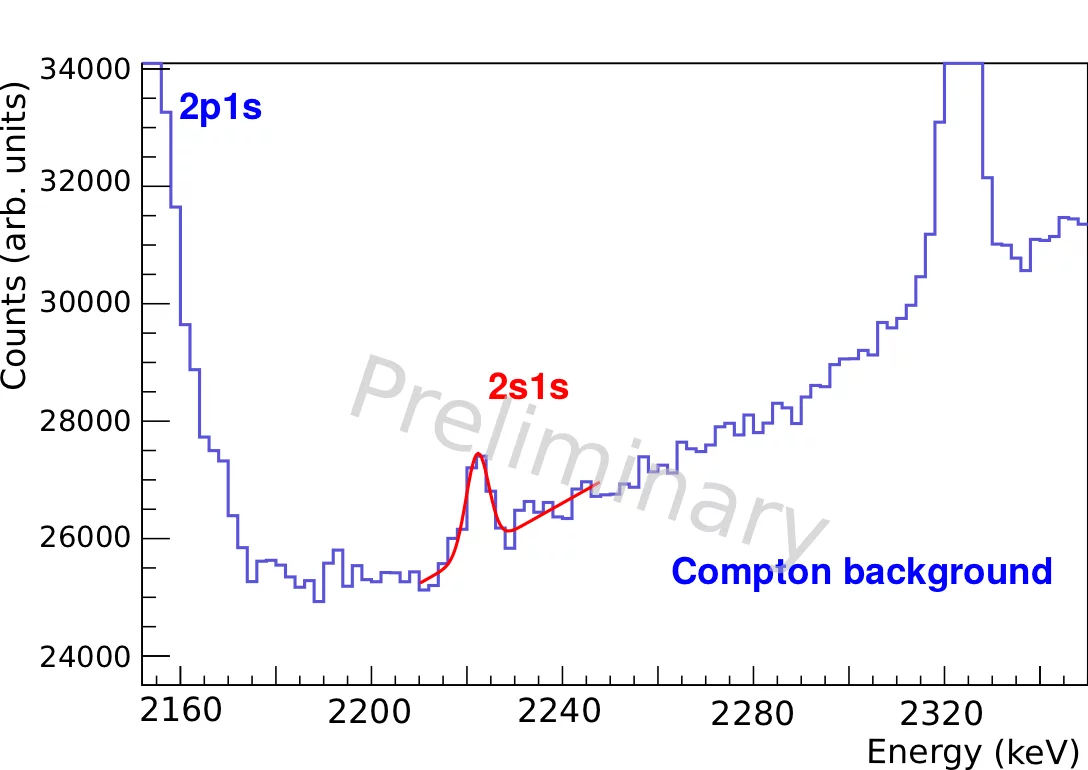Muonic atoms are the hydrogen-like bound state of a negative muon with a nucleus. They act as laboratories for the study of fundamental physics and provide crucial input to quantum electrodynamics, the weak interaction and the strong interaction. The negative muon is captured in a highly excited state and cascades down to its ground-state through the emission of Auger electrons and X-rays.
Due to the approximately 200 times higher mass of the muon compared to the electron, the muon orbits the nucleus at much shorter distances and the binding energies are correspondingly increased. The emitted X-rays thus typically have energies in the 0.1 - 10 MeV region depending on the atomic number. This makes high-purity germanium detectors the ideal choice to study these X-rays. During our beamtime of 2019, we had the opportunity to use the Miniball germanium detector array for our measurements.
Many studies of muonic atoms have been performed by detecting the X-rays from the muonic cascade and most stable and a few unstable isotopes have been investigated with muonic atom spectroscopy techniques. In particular, the energies of these detected X-rays have been used to extract the most accurate absolute nuclear charge radii [1]. Additional information such as the quadrupole moment of a nucleus can be obtained as well [2,3]. However, experiments with muonic atoms have been limited to target masses of a few hundred milligrams as a conventional muon beam had to be stopped directly in the material. We have developed a method based on muon transfer reactions inside a high-pressure deuterium/hydrogen mixture to work with target masses of just a few micrograms. The method is inspired by all the work performed in the context of muon catalysed fusion (see [4] and Refs. therein) and the experiments of Refs. [5,6].
This new technique allows to perform muonic atom spectroscopy on highly radioactive or very scarce elements and enables the measurement of the absolute charge radius of a whole new set of isotopes. The absolute charge radii from muonic atom spectroscopy nicely complement the large work performed with laser spectroscopic methods on full chains of isotopes yielding the corresponding charge radii differences. As a first proof of principle, we have measured the 2p-1s transitions in muonic gold from a 5 μg target [7].
Our main aim of the experiment is the measurement of the charge radius of Ra-226, which is so far unknown. The knowledge of this radius is needed by an ongoing experiment measuring atomic parity violation in a single radium ion [8,9]. During our beamtime in 2019, we have for the first time seen the muonic X-rays from Ra-226 and in addition from Cm-248 - the heaviest nucleus ever probed with muonic atom spectroscopy. The analysis of these results is currently ongoing. In addition, we are currently exploring which other isotopes would be best suited for our technique and where the determination of an absolute charge radius would be most needed.
The collaboration is also investigating the possibility to measure atomic parity violation directly in muonic atoms. A parity violating interaction mixes the 2s and 2p atomic levels, resulting in an E1 admixture in the otherwise pure M1 2s-1s transition [10]. We used the muX apparatus to observe this transition for the first time, and work towards significantly improving the signal to background. This opens up the possibility of performing a measurement of a parity-odd observable from a neutral current interaction with muons at low energies [11]. A first measurement on the 2s-1s in Zn and Kr was performed in during the 2017, 2018, and 2019 experimental campaigns.
References
[1] G. Fricke et al., Atomic Data and Nuclear Data Tables 60, 177 (1995).
[2] A. Antognini et al, Phys. Rev. C 101, 054313 (2020).
[3] A. Knecht et al., arXiv:2004.03314v1 (2020).
[4] C. Petitjean, Hyperfine Interactions 138, 191 (2001).
[5] D. J. Abbott et al., Phys. Rev. A 55, 214 (1997).
[6] P. Strasser et al., Hyperfine Interact. 193, 121 (2009).
[7] A. Skawran et al., Nuovo Cim. 42, 125 (2019).
[8] L. W. Wansbeek et al., Phys. Rev. A 78, 050501(R) (2008).
[9] M. Nuñez Portela et al., Applied Physics B 114, 173 (2014).
[10] J. H. Missimer and L. M. Simons. Phys. Rept. 118, 179 (1985).
[11] D. McKeen and M. Pospelov. Phys. Rev. Lett. 108, 263401 (2012).
Collaborating institutes:
Polish Academy of Sciences (Poland), Paul Scherrer Institut (Switzerland), ETH Zürich (Switzerland), Johannes Gutenberg University Mainz (Germany), KU Leuven (Belgium), GSI Helmholtzzentrum für Schwerionenforschung Darmstadt (Germany), Helmholtz Institute Mainz (Germany), Universität zu Köln (Germany), LKB Paris (France), University of Groningen (The Netherlands), University of Pisa and INFN, Pisa (Italy), University of Victoria (Canada), Perimeter Institute (Canada), CSNSM, Université Paris Saclay (France)




